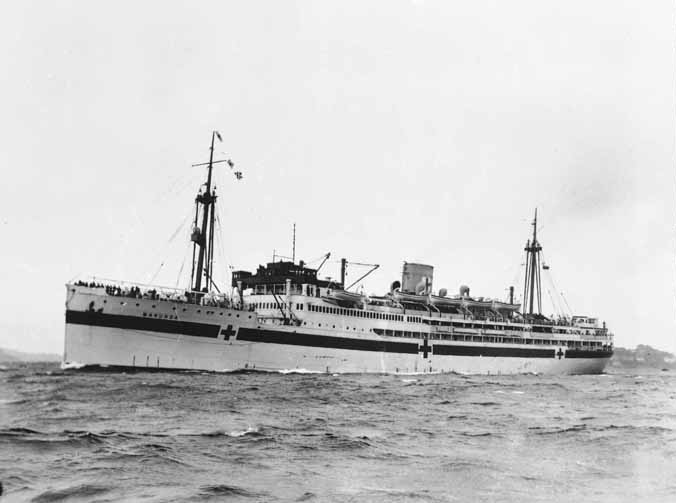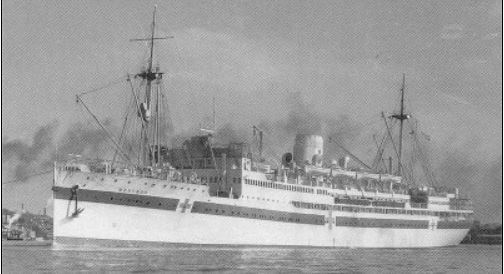AHS Manunda
From Our Contribution
 The newly fitted hospital ship Manunda in Sydney Harbour on 17 August 1940 | |
 2/1 HMAHS Manunda via Australia at War | |
| History | |
|---|---|
| Name | AHS Manunda |
| Owner | Adelaide Steamship Company, Melbourne |
| Builder | William Beardmore and Company, Dalmuir |
| Yard number | 651 |
| Launched | 27 November 1928 |
| Completed | 16 April 1929 |
| In service | June 1929 |
| Out of service | September 1939 |
| In service | April 1948 |
| Out of service | September 1956 |
| Reclassified | Hospital ship, 25 May 1940 |
| Fate | Sold, October 1956 |
| General characteristics | |
| Type | Passenger/cargo ship |
| Tonnage | 9,115 tons |
| Length | 430 ft (130 m) |
| Beam | 60 ft 2 in (18.34 m) |
| Depth | 35 ft 7 in (10.85 m) |
| Propulsion | Harland & Wolff oil-fired engines twin screw |
| Speed | 15 knots (28 km/h or 17 mph) |
| Capacity | 312 passengers (176 first class / 136 second class) |
Contents
[hide]Remarks
TSMV Manunda was an Australian registered and crewed passenger ship capable of carrying 312 passengers, built for the Adelaide Steamship Company. She was converted to a hospital ship in 1940 and made four trips to the Middle East and Mediterranean between November 1940 and September 1941. She was then despatched to Darwin.
On the morning of 19 February 1942, Manunda was damaged during the Japanese air raids on Darwin, despite her highly prominent red cross markings on a white background. 12 members of the ship's crew and hospital staff were killed, 19 others were seriously wounded and another 40 or so received minor wounds. Manunda was able to act as a casualty clearing station for injured personnel from other ships involved in the attack. She sailed to Fremantle the next day.
After a refit in Adelaide, she went to Milne Bay in Papua New Guinea, where she acted as a floating hospital for the Allied forces who were stationed there. She spent several nights in Milne Bay, during attacks by Japanese warships, but her status as a hospital ship was on this occasion honored by Japanese naval units which raked her with searchlights on three nights running. She made a total of 27 voyages from Milne Bay to Brisbane and Sydney transporting wounded troops. As the war continued, she was relocated as required and she followed the Allied forces to various islands around the Pacific.
After the Japanese surrender, Manunda was dispatched to Singapore to repatriate ex-POWs and civilian internees who had been imprisoned in Changi Prison. She also sailed to Labuan in Borneo to pick up ex-POWs and civilian internees from Batu Lintang camp. She resumed her passenger duties after the war, before being sold in October 1956 to a Japanese company and was broken up in 1957.